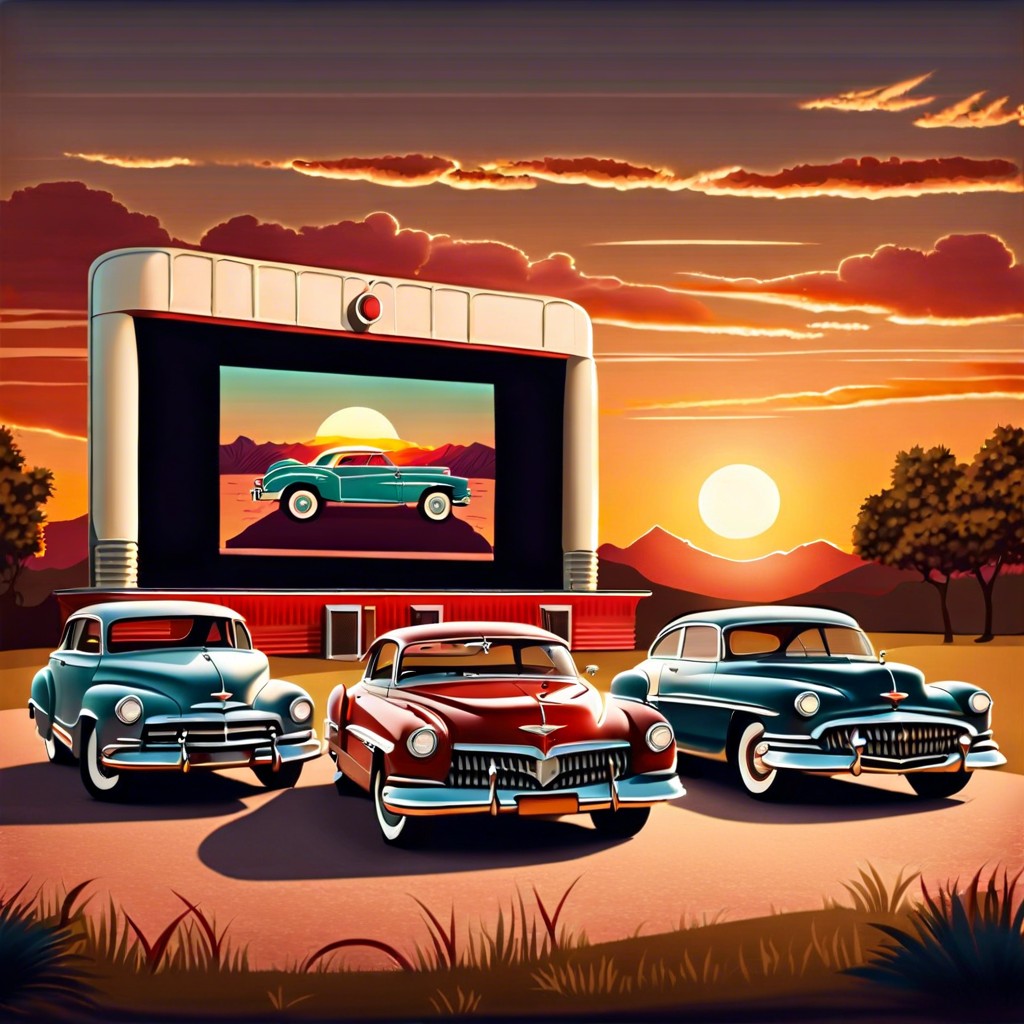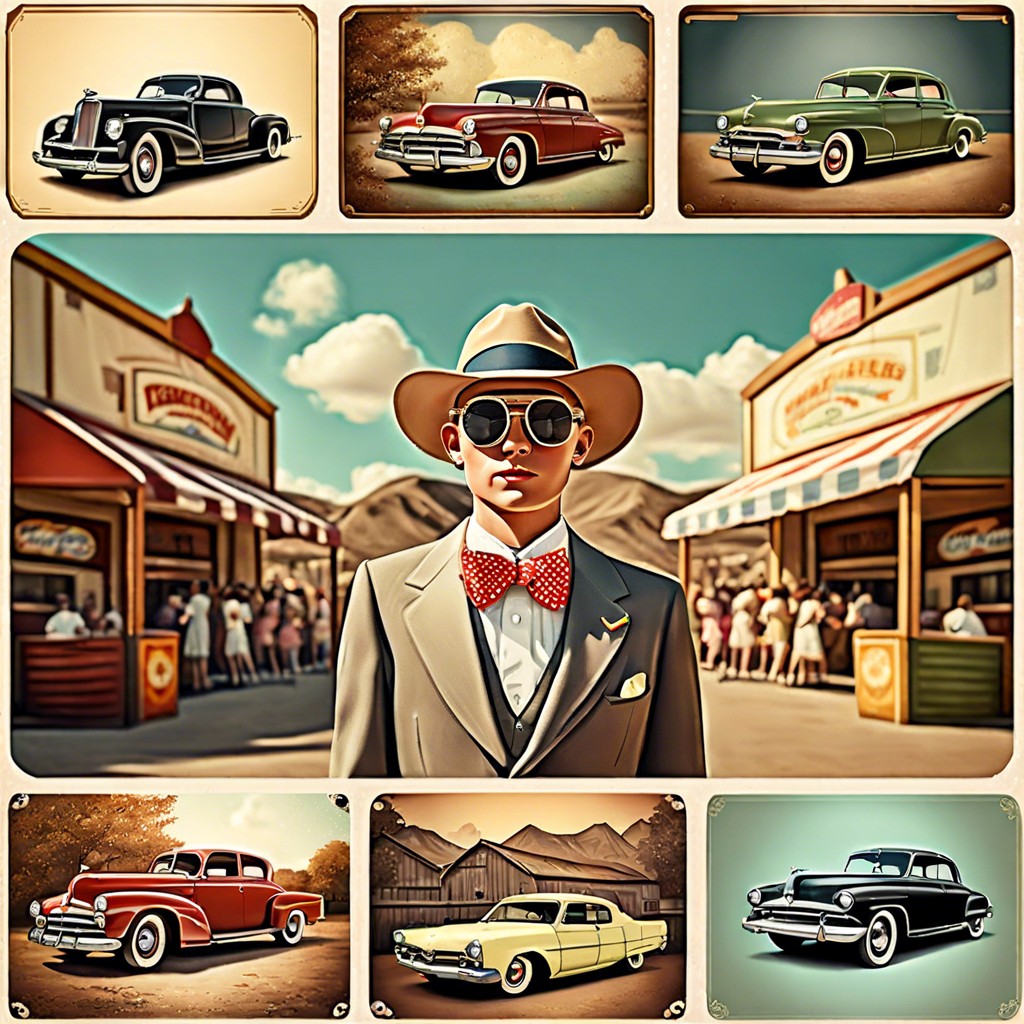Last updated on
Learn about the history, cultural impact, and current revival of vintage drive-in theaters.
Key takeaways:
- Vintage drive-ins offer a unique outdoor movie-watching experience.
- Technological advancements have improved picture and sound quality.
- Nostalgia plays a significant role in the enduring appeal of drive-ins.
- Drive-ins serve as social hubs, fostering community connections.
- Challenges facing modern drive-ins include real estate costs, competition from streaming platforms, weather dependence, and logistical issues.
Evolution of the Drive-In Cinema Experience

Drive-in cinemas first appeared in the 1930s and quickly became a symbol of American pop culture, offering a unique movie-watching environment under the stars. Initially, these outdoor theaters were simple operations with small screens and rudimentary sound systems, but they provided a novel way for families to watch movies from the comfort of their cars.
Over time, drive-in technology evolved significantly. Large, clearer screens replaced the old, grainy ones, improving the visual experience. The introduction of FM radio transmission in the 1970s allowed viewers to hear the movie directly from their car’s sound system, providing much clearer audio compared to the traditional window-mounted speakers.
This evolution helped drive-ins maintain a loyal audience, even as multiplexes began to dominate the cinematic landscape. The charm of watching a film outdoors combined with improved audio-visual quality kept the drive-in experience alive for enthusiasts and nostalgia-seekers alike.
Technological Advancements in Projection and Sound Systems

Drive-ins have embraced modern technology to improve picture and sound quality, enhancing the viewing experience dramatically since their mid-20th-century heyday. Initially limited by the brightness of the projector and prone to weather disturbances, today’s drive-ins employ digital projectors that provide sharp, clear images regardless of external conditions. This shift not only improves visibility but also allows for the screening of a broader range of films, including those reliant on detailed visuals.
Sound systems have also undergone significant upgrades. Where once audio was broadcast through low-quality, in-car speakers mounted to poles, most drive-ins now utilize FM radio transmission. This allows viewers to receive high-fidelity sound directly through their vehicle’s audio system, ensuring clear and uninterrupted sound. This simple but effective solution has revitalized the drive-in atmosphere, recreating the immersive experience modern audiences expect.
Additionally, some venues have explored the use of mobile apps for sound delivery, giving viewers the option to stream audio through their smartphones. This not only caters to the preference for personal devices but also solves issues related to signal interference, promising an even smoother movie-going experience.
Nostalgic Appeal: Why Drive-Ins Are Still Loved
Drive-ins whisk us back to simpler times when families and friends clustered in cars for a mix of private and communal entertainment. The unique setting allows movie-goers to enjoy films under the stars, an experience that modern indoor cinemas simply cannot replicate. Additionally, the comfort of watching from one’s own vehicle provides a personalized feel that enhances the overall experience.
Nostalgia plays a crucial role in their enduring appeal. Many patrons relive their youthful memories and introduce new generations to the quaint charm of watching a movie outdoors. This blend of past and present attractions supports the ongoing popularity of drive-in theaters even in an era dominated by streaming services.
Community Engagements: How Drive-Ins Serve As Social Hubs
Drive-in theaters offer more than a movie viewing experience; they foster community connections. Often, these venues host local events, from flea markets in the daylight to classic car shows before the evening’s films begin. Such gatherings turn an ordinary movie night into a community festival, providing an opportunity for local businesses and craftspeople to showcase their products.
Additionally, the space available at drive-in theaters invites families and friends to socialize in ways traditional cinemas can’t match. With the freedom to set up lawn chairs, enjoy homemade snacks, and chat freely, attendees can interact without the usual constraints of indoor theaters. This casual atmosphere helps strengthen communal ties, creating a shared experience rooted in local culture and leisure.
Challenges Facing Modern Drive-Ins
Despite their charm, modern drive-ins face several hurdles. First, real estate costs have surged, making large parcels needed for drive-ins increasingly expensive and difficult to maintain profitably. Second, competition from streaming platforms means fewer people leave home for movies. Additionally, weather dependence can disrupt operations, limiting reliable open days and affecting profitability. Finally, logistical issues, like the need for FM radio transmission or modern digital projection systems, require substantial investment, a significant barrier for operators looking to either upgrade or initiate drive-in venues. These factors combine to challenge the viability and growth of drive-in cinemas today.
Related:




